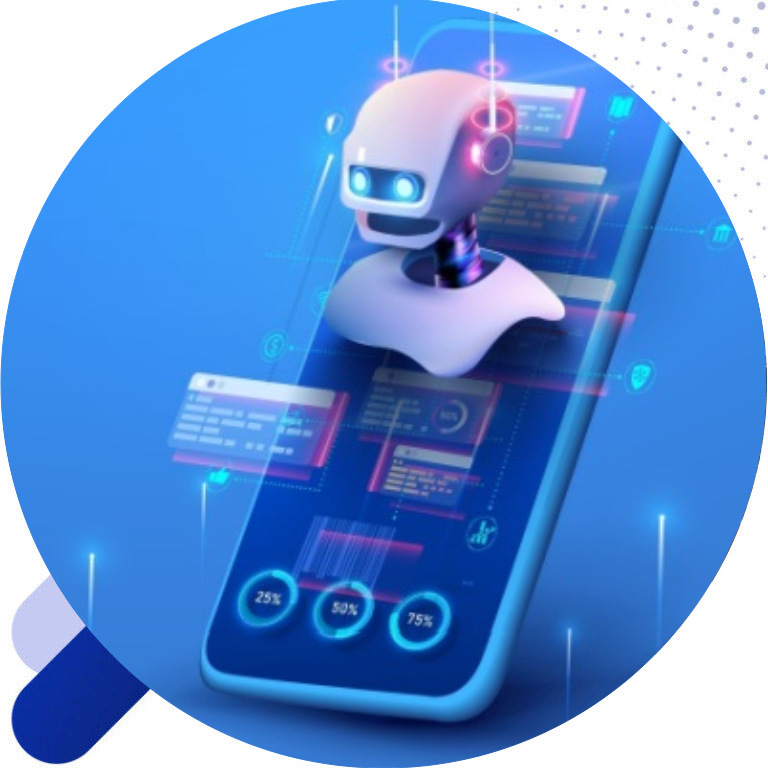Mobile Development: A Comprehensive Overview
In the modern digital age, mobile devices have become an indispensable part of daily life. With the proliferation of smartphones and tablets, users expect seamless and intuitive applications that enhance their experience and meet their needs. This demand has driven an unprecedented boom in mobile development—the process of creating software applications that run on mobile devices. This blog post will delve into the intricacies of mobile development, exploring its definitions, platforms, frameworks, development methodologies, and future trends, to provide a complete understanding of the field.

Understanding Mobile Development
Mobile development, in its essence, is the act of developing software applications that are designed to operate on mobile devices. This includes smartphones, tablets, and, increasingly, wearable technology such as smartwatches and fitness trackers. These applications can be native, hybrid, or web-based, each serving specific use cases and target audiences.
The Mobile Development Ecosystem
The mobile development landscape comprises various players, including developers, designers, project managers, and quality assurance specialists, all working collaboratively to bring an app from concept to deployment.

Development Frameworks and Tools
A multitude of frameworks and tools exists to streamline the mobile development process. The choice of technology stack can influence performance, development speed, and overall user experience. Here are some essential frameworks and tools used in mobile development:
Frameworks for Native Development:
- Xcode: A comprehensive IDE for macOS that provides tools for developing iOS and macOS applications.
- Android Studio: The official IDE for Android development, featuring robust tools for building, testing, and debugging applications.
Frameworks for Hybrid Development:
- React Native: Created by Facebook, this popular framework allows developers to build native applications using JavaScript and React, sharing a significant amount of code across platforms.
- Flutter: Developed by Google, Flutter enables the creation of visually attractive interfaces using a single codebase, leveraging the Dart programming language.
Development Tools:
- Git: A version control system that helps developers manage code changes and collaborate with team members.
- JIRA: A project management tool that tracks tasks, bugs, and milestones, improving collaboration and productivity among development teams.
- Postman: A powerful API development tool that facilitates testing and interaction with APIs, which are essential for app functionality.
Key Elements of Mobile Development
Mobile development primarily revolves around two major platforms: Android and iOS. Android, developed by Google, is an open-source platform that powers a vast majority of mobile devices globally, while iOS, developed by Apple, is known for its closed ecosystem and seamless integration with Apple hardware.
Platforms and Operating Systems
Mobile development primarily revolves around two major platforms: Android and iOS. Android, developed by Google, is an open-source platform that powers a vast majority of mobile devices globally. iOS, developed by Apple, is known for its closed ecosystem and seamless integration with Apple hardware. Each platform has its development environment and tools – Android Studio for Android and Xcode for iOS.
Development Languages and Frameworks
The choice of programming languages and frameworks plays a crucial role in mobile development. For Android, Java and Kotlin are the predominant languages, while iOS development typically involves Swift and Objective-C. Additionally, cross-platform frameworks like React Native, Flutter, and Xamarin have gained popularity, enabling developers to write code once and deploy it across multiple platforms, thus saving time and resources.
User Experience (UX) and User Interface (UI) Design
An essential aspect of mobile development is crafting an intuitive and engaging user experience. UX/UI design involves understanding user needs and behaviors, creating wireframes and prototypes, and employing design principles to build visually appealing and functional interfaces. Tools like Sketch, Figma, and Adobe XD are widely used for designing and prototyping mobile apps.
Backend and APIs
A robust backend infrastructure is vital for mobile apps that require data storage, authentication, and real-time updates. Backend services can be built using various technologies such as Node.js, Ruby on Rails, or Django, and can be hosted on cloud platforms like AWS, Google Cloud, or Azure. APIs (Application Programming Interfaces) enable communication between the frontend (the app) and the backend, facilitating data exchange and functionality integration.
Security and Performance Optimization
Mobile development requires attention to security, as protecting user data and maintaining privacy are critical. Developers implement various security measures, such as data encryption, secure authentication mechanisms (e.g., OAuth, JWT), and regular security audits. They also follow best practices for secure coding to prevent vulnerabilities such as SQL injection, cross-site scripting (XSS), and man-in-the-middle (MITM) attacks.
Continuous Integration and Continuous Deployment (CI/CD)
Continuous integration and continuous deployment (CI/CD) practices are essential for maintaining and updating mobile apps. CI/CD pipelines automate testing, building, and deployment processes, enabling developers to deliver updates quickly and reliably. Tools like Jenkins, GitLab CI, and CircleCI are commonly used to implement these practices, enhancing development speed and reducing the risk of deployment errors.
Challenges in Mobile Development
Fragmentation
The diversity of devices, screen sizes, and operating system versions creates fragmentation issues, making it challenging to ensure consistent performance and user experience across all devices.
Performance Optimization
Mobile apps must be optimized for performance to provide a smooth user experience. This involves managing memory, minimizing battery consumption, and reducing load times, which can be technically demanding.
App Store Approval
Getting an app approved by app stores like Google Play and the Apple App Store can be a rigorous process. Developers must adhere to strict guidelines and ensure their apps meet quality and security standards.
Future Trends
Looking ahead, mobile development is poised to undergo further transformation driven by emerging technologies and evolving user expectations.
Artificial Intelligence (AI) and Machine Learning (ML)
The integration of AI and ML into mobile applications is set to revolutionize user experiences. From chatbots enhancing customer service to personalized content recommendations, these technologies will empower developers to create more intelligent applications.
5G Connectivity
The rollout of 5G networks will facilitate faster data transfer and lower latency, enabling more complex and data-intensive mobile applications. This advancement will extend the possibilities for augmented reality (AR), virtual reality (VR), and IoT applications.
Speak With Expert Engineers.
Contact us by filling in your details, and we’ll get back to you within 24 hours with more information on our next steps

Please fill out the contact form

Call Us
United Kingdom: +44 20 4574 9617

UK Offices
Business Address: 70 White Lion Street, London, N1 9PP
Registered Address: 251 Gray's Inn Road, London, WC1X 8QT
Schedule Appointment
We here to help you 24/7 with experts

